Reclaimed Street Bricks
Jamestown Classic Street Bricks
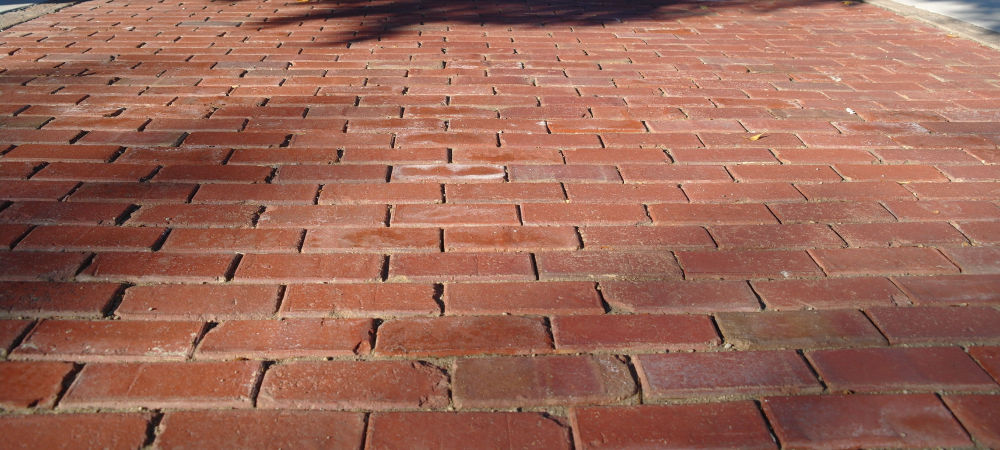
Imagine the horse and carriages that rode on these antique street pavers over 100 years ago. (more pictures)
Reclaimed Jamestown Classic Red Bricks
Our Jamestown Classic brick pavers are an important piece of history - and will add beautiful historic character to your next project. The reclaimed street brick pavers from our Jamestown Classic Series originate from Jamestown, New York, but have been used for paving projects throughout the Northeast. At its peak, the Jamestown Shale Paving Brick Co. produced 15 million bricks a year—all of which were the “hardest and most durable” for paving.
Our customers have used this series of products for driveways, patios, streetscapes and other landscape projects. Their rich mix of colors and classic look helps our reclaimed Jamestown pavers pair well with homes and other properties in a wide variety of styles, ages and settings.
To discover more about the history of our reclaimed street pavers, visit the History section below.
View Gallery Product History Request Pricing
The Jamestown Classic Series includes:
- Jamestown Classic | Download Product Cut Sheet
Each pallet includes pavers with a beveled (sloped) edge, which helps improve your footing on hills, and with square edges. One of our original products, these reclaimed brick pavers will add vibrant color and antique character to your space. - Jamestown Classic Oversized | Download Product Cut Sheet
Wider than the Classics, these salvaged street pavers all feature squared off edges that create a flat surface, ideal for intimate and sprawling patios alike. - Jamestown Classic Dark | Download Product Cut Sheet
The same size as the standard Classic, these old brick pavers are available in a darker color range—deep reds and rich, earthy tones that could be perfect for your next paving or landscape project. - Jamestown Slims | Download Product Cut Sheet
Narrower than the others in this series, the Jamestown Slims also come in a wider color range. The Slims were originally made using a cruder firing process, resulting in some burnt and under-fired bricks, adding greatly to the spectrum of colors you’ll find today.
View Reclaimed Jamestown Classic Bricks in Action!
-
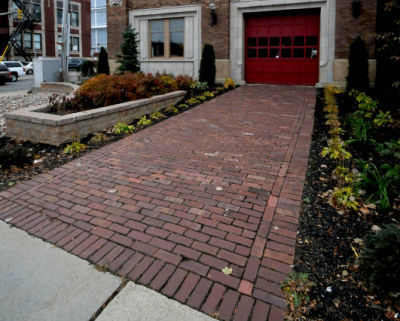 VIEW LARGER
VIEW LARGERJamestown Classic
Jamestown Classic in driveway of historic firehouse -
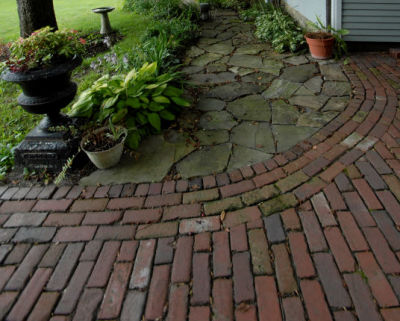 VIEW LARGER
VIEW LARGERClassic Mixture
Jamestown Classic field with Jamestown Slims and Jamestown Rustic border -
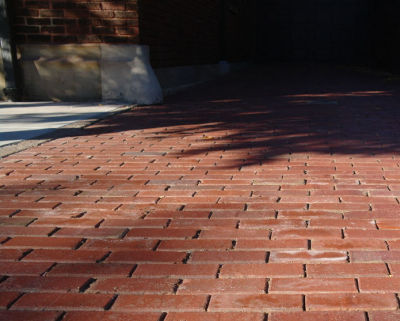 VIEW LARGER
VIEW LARGERJamestown Classic Oversized
Jamestown Classic Oversize installed upside down to expose the unworn face -
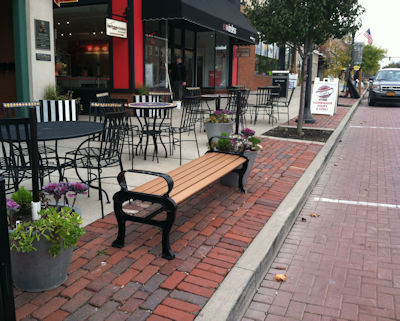 VIEW LARGER
VIEW LARGERJamestown Classic
Used bricks enhance the streetscape in this historic village -
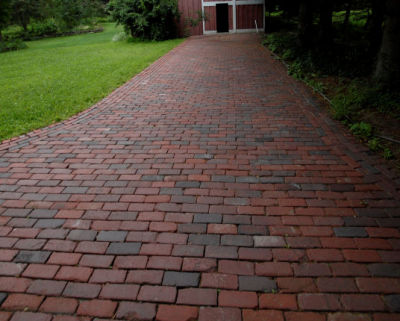 VIEW LARGER
VIEW LARGERJamestown Classic
Jamestown Classic driveway to antique barn -
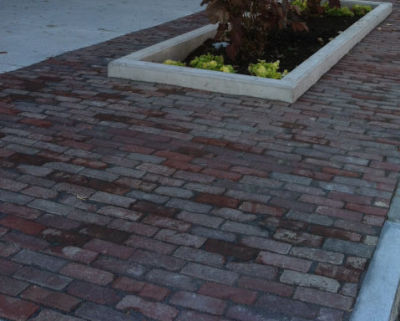 VIEW LARGER
VIEW LARGERJamestown Classic
Jamestown Classic permeable installation in historic streetscape -
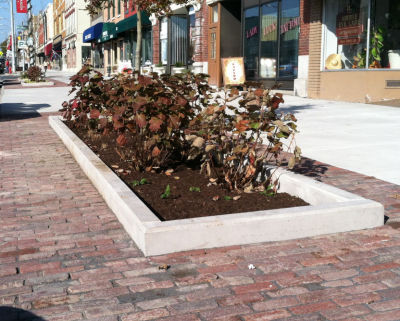 VIEW LARGER
VIEW LARGERJamestown Classic
Jamestown Classic permeable installation in historic streetscape -
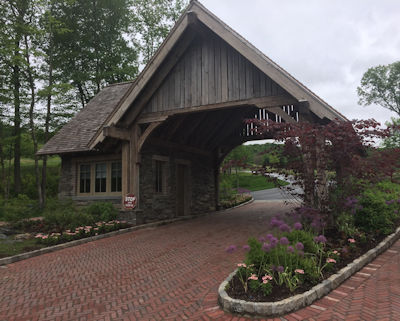 VIEW LARGER
VIEW LARGERJamestown Slim
The herringbone installation pattern enhances this subdivision entrance -
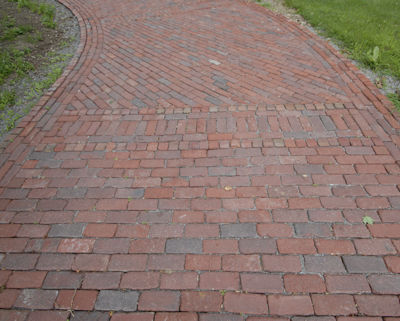 VIEW LARGER
VIEW LARGERClassic Mixtrure
The mixture of brick types and brick installation patterns creates interesting pavement -
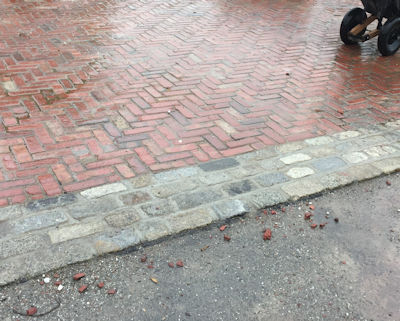 VIEW LARGER
VIEW LARGERJamestown Slim
Herringbone pattern with regulation cobblestone border -
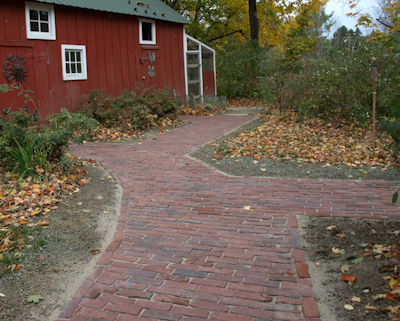 VIEW LARGER
VIEW LARGERJamestown Slim
Pathway to antique barn/chicken coop -
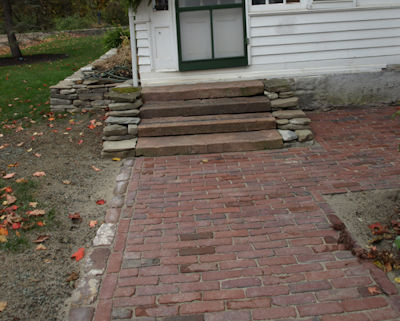 VIEW LARGER
VIEW LARGERJamestown Slim
Sidewalk edged with Medina cobblestone leads to Medina curb steps -
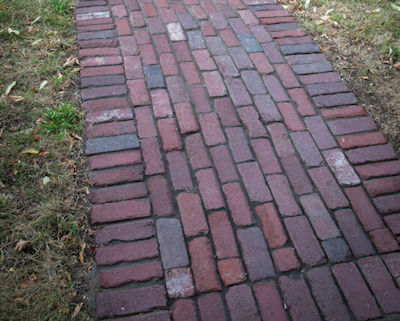 VIEW LARGER
VIEW LARGERJamestown Slim
Reclaimed brick pathway with soldier course edging
A Snapshot of History: Jamestown Classic Bricks
Our Jamestown bricks are part of the rich history of the city of Jamestown, which is located in Chautauqua County, New York, and was first incorporated in 1827. Late in the 1800s, there were no paved streets in the city, but by 1900 there were 70 miles of them—all thanks to the Jamestown Shale Paving Brick Co. Originally used on streets, sidewalks and buildings, these bricks have stood the test of time and can lend a rich, antique look to your project today.
Jamestown Shale Paving Brick Co.
Founded in 1893 by Judge Jerome B. Fisher, the company first used clay to make its bricks, but quickly shifted to shale in the early 1900s. Its operations moved to East Jamestown, where the shale supply was abundant and of high quality. The resulting bricks were the “hardest and most durable kind of bricks for paving purposes,” according to the Illustrated History of Jamestown published in 1900.
The popularity of Jamestown bricks soared, and the company thrived because of its shale and its proximity to the railroad for shipments. At one time, “every foot of pavement laid in the city of Jamestown” came from the company’s quarries. The bricks were used for paving projects in Brooklyn, New Jersey and even in the tunnels into New York City. At its peak, the company produced 15 million bricks a year, with a capacity of 100,000 bricks (or over 135 tons) a day.
The Jamestown Shale Paving Brick Co. closed briefly during World War I because of labor shortages, but reopened after the war to create jobs for returning soldiers. The Broadhead family bought the company around 1920 and owned it until it closed in 1935 amid the Great Depression.
How the bricks were made
Today, Jamestown has more than 50 miles of exposed red brick streets and a remarkably flat landscape—thanks, again, to the operations of the Jamestown Shale Paving Brick Co. After shale was discovered as a useful, strong material for bricks, the company’s quarries “worked with great diligence, and as a result the rugged and almost inaccessible hills of [Jamestown] been whittled down to an almost level plain to supply the constant and ever-increasing demand for brick.”
Here’s how the bricks were produced: First, dynamite was detonated in a quarry, breaking the shale into millions of pieces. Workers shoveled the pieces onto a large pan, where a 4,800-pound crusher smashed them into a fine powder. A system of sieves, or sifters, filtered unwanted material out of the powder, which was then mixed with water and molded into a long brick bar. A machine, with knives working automatically, would cut the bar down to proper-sized bricks. Then, the bricks went into a dry kiln and a burning kiln, and were finally ready to be shipped to cities and towns across the country.
The process was far more extensive and grueling than modern practices, resulting in unique paving materials that are as strong today as they were when they were produced over 100 years ago.